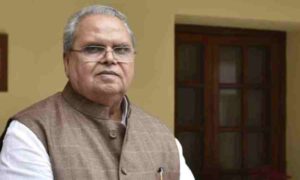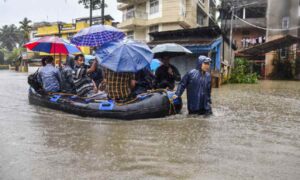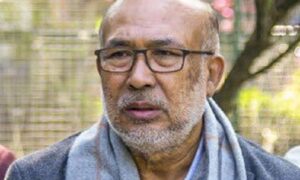
File Picture
The reported recommendation of the committee appointed by the center to suggest measures to implement clause 6 of the 1985 Accord between the Center and the leaders of the Assam movement against the foreign Nationals to reserve 67% of the seats in the Assam Assembly for the” Indigenous” people is bound to generate a lively debate in the community of the anthropologists and the sociologists; because the word ” Indigenous” has by now a globally accepted connotation and a clear Indian official stand on the subject.
It’s however also a fact that ” identity assertion”- often violent has also been a recurring theme of the politics of Assam and north east. I might recall that even when I joined government of Assam over half a century ago the Assamese words such as ” tholua” and ” khilonjia” meaning local and Indigenous were commonly used to define , add extra weight and primacy to such interests over other competing interests and therefore founded on the idea of the “Indigenous” identity.
In the turbulent 1960’s Assam, then comprising the entire Region except Tripura and Manipur saw unending movements for a hill state and armed insurgencies in Naga Hills and Naga inhabited areas of Manipur, Assam and then North East Frontier Agency and Mizo hills District. These movements led to the Reorganization of the north east in 1971 but didn’t end the politics of violent identity assertion. The signing of the Third Bodo Accord in the form of a Memorandum on Settlement of Peace with the National Democratic Front of Bodoland,a militant group on January 27 last must be seen in this context while the Karbi and Dimasa demands for separated Statehood continue to cause serious law and order problems and uncertainty about Assam’s future.
Even now and long after reorganization the primary narrative of the politics of the north east is not development of the society but identity assertion and steps needed to meet the perceived threats to the same from outside the region. Hence the need to appreciate the concept of ” indegeneity and the Indigenous people” as recognized in the UN system and its prospects for adoption as state policy.
In a 2013 University of Wollongong, Australia study of ” Indigenous identity and politics of authenticity” M. Harris,B. Carlson and Evans argued that” the concept of identity is both a relational and contextual construct”. It is relational in the sense that it is not possible to hold a social identity all alone as identities are produced in interaction with others. Hence the need of” others” who appear different provide both the rationale and also the criteria and hence the basis of the separate identity. They also held that ” identities are contextual in the sense that they are constituted differently in different historical and cultural contexts”. Identity is therefore as J. Nagel, another scholar put it succinctly is a “socially constructed variable definition of self or other whose existence and meaning is continuously negotiated, revised and revitalized”.
For these complexities ,H. Srikant of NEHU Shillong observed in the Economic and Political Weekly article entitled ” Who in the North East are Indigenous? in its May 17,2014 issue that the UN working group on Indigenous people avoided a precise definition of the Indigenous people. However the ILO- The International Labor Organization of the UN its convention no 169 of 1989 on the working rights of the Indigenous and the tribal people used the term” Indigenous people both “to tribal people whose socio cultural and economic conditions distinguish them from other sections of the national community and whose status is regulated wholly or partially by their own customs and traditions or by special laws and regulations and also to people who are regarded as Indigenous because of their descent from population that inhabited the country at the time of conquest or colonisation”. The ILO definition was amplified by the World Bank with emphasis on ” the presence of customary social and political institutions and primarily subsistence oriented production”. All these implied that to be regarded as ” Indigenous people”, the groups claiming such status have to prove that ” they have been marginalized and made subordinate to communities that migrated and colonised the land” observed Srikant.
He however pointedly out that it might not be possible for any community of the north east to meet all these attributes. One must remember that the western view of the Indigenous people is mainly based on their study of the inhabitants of the pre colonial North and South America and Australia who were totally supplanted by the European colonists which didn’t happen in India. In the North East various ethnic groups moved to the flood Plains of Brahmaputra and Barak valley as well as in the Hills from the north, east and the west – Mongoloids and others from Bengal and Indo Gangetic valley to establish organized societies and states eventually which produced the region’s diverse cultures and languages. This process of state formation took a definite shape in the medieval times in Assam Proper under the Ahom Kings comprising old Kamrup,Nowgong, Darrang,Sibsagar and Lakhimpur and also in Manipur, Tripura,Cachar,Jaintia hills,Koch bihar in North Bengal while in the hills tribal chiefs ruled. This political order was disrupted only in the 19th century when the region was reduced to the ” Eastern frontier” of Bengal Presidency,” the British bridgehead in India” as historian Chris Bailey put it based in Fort William in Calcutta and implicit in the law now so much in public discourse in the region- Bengal Eastern Frontier Regulation 1873.
Thus identifying the first settlers of north east or India with such a long history of population movements is really not possible. Presumably for this very reason India has taken a stand that the concept of the Indigenous people is not relevant in the Indian situation and has not ratified the ILO 169. We may also note that there is no definition of a ” tribe” in the Indian Constitution though several groups have been listed in the Schedule of tribes.
Scholars such as Andre Beteille have also reflected on the problem associated with identifying tribals in India as indegenous people as the term means not only a type of society but also a stage of evolution on the basis of mode of livelihood which is subject to change with the mode of production of the larger economy. This is seen in Meghalaya from its very beginning in 1971 as a tribal elite emerged in the words of Srikant as “proto bourgeoisie”who had virtually appropriated tribal common property resources to carry out mining of coal, limestone and sand for export, felling of bamboo and timber for making plywood and real estate development turning Meghalaya into an ” extractive economy”.
This development prompted Meghalaya civil society to state bluntly in its 2018 Citizens Report that” Meghalaya has a resource curse” because her natural resources have been” extracted” without any concern about either environmental sustainability or larger common good to benefit illegally a small section of the local tribals. The role of this class all over the region fits in with Gausset’s definition of ” Autochthonous” denoting those who have established superiority in the region but apprehensive of their future domination; and hence the need to capitalize on the Indigenous identity as an instrument of power game to perpetuate their control of the state.
The subject of the Indigenous people is indeed fascinating and complex. It is a human rights issue in the international arena while in the North East it’s in the realm of politics for control over the state and to marginalized targeted ethnic groups. For this very reason the issue has attracted the notice of researchers elsewhere in Asia.
It’s interesting to see an article on this very subject in Environment Rule of Law in Asia -a 2019 Publication of Konrad Adenauer Stiftung- University of Cebu School of Law, Philippines by Ritwick Dutta entitled” Indigenous people in the Indian context: why the concept has limited relevance in India and its continued use is problematic.” There is strength in Dutta’s argument that the use of the term Indigenous and the tribal either together or interchangeably is not correct and that rather than Indigenous, Autochthonous reflects the ground reality. His other point that while there can be legal safeguards to protect the culture and identities of the communities that are Autochthonous but such safeguards should be reasonable and in no way lead to further division of the society on grounds of religion, ethnicity or language merits a serious consideration by the policy makers.
[the_ad id=”22718″]


















